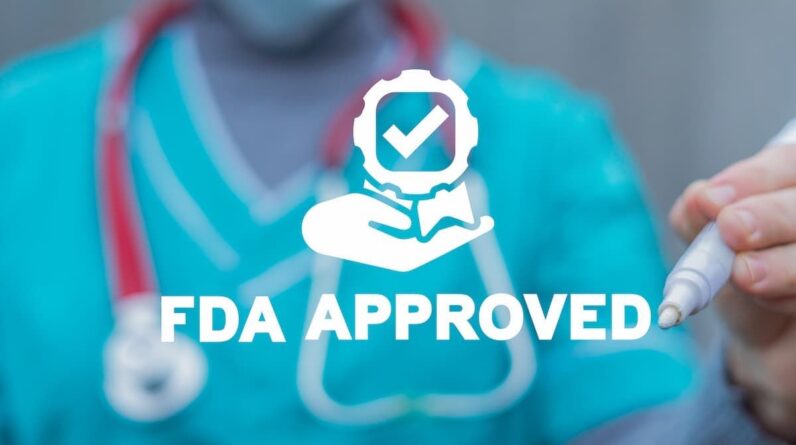
(Image credit: AdobeStock/wladmire1804)
Eyenovia Inc. FDA announced Mydcombi (tropicamide hydrochloride and phenylephrine ophthalmic spray) 1%/2.5% to induce mydriasis for diagnostic procedures and in conditions where short-term pupillary dilation is desired.
According to the company, this represents the first fixed-dose combination of tropicamide and phenylephrine approved in the United States and also the first product using Eyenovia’s patented Optejet device to be approved by any regulatory authority.
Mydcombi is designed to improve the efficiency of the 106 million comprehensive eye exams performed each year in the United States, as well as the estimated 4 million applications of pharmacologic mydriasis for cataract surgery. The product is contraindicated and should not be used in patients with known hypersensitivity to any component of the formulation.
Eyenovia CEO Michael Rowe praised the news in a statement.
“The approval of Mydcombi, our first FDA-approved product, represents the culmination of years of tireless effort by the entire Eyenovia team, and I would like to express my sincere thanks to the associates and experts technicians who helped advance this important program through this transformative milestone,” Rowe said in the statement. “We look forward to introducing Mydcombi to key offices from this summer as we bring our in-house manufacturing capabilities online by 2024.”
Additionally, Rowe noted that the FDA approval of Mydcombi provides validation of the Optejet as the first product approved with the Optejet platform, which is critical not only to Eyenovia’s internal development programs, including MicroLine for presbyopia, but also its associated programs.
“We see opportunities to unlock significant opportunities in the future treatment of other eye conditions, such as glaucoma and dry eye. I am confident in our ability to maintain our current momentum,” he added.
“I am proud of our team for this significant achievement, which represents many ‘firsts’ for eye care,” said Sean Ianchulev, MD, MPH, Eyenovia’s founder and chairman of the board, in a statement. “The use of dropper bottles has presented challenges for dosing in ophthalmic settings in millions of patients. We can do better now by using sophisticated microarray print delivery with physiological dosing that is similar to the volume of the natural tear film”.
Eyenovia’s management will provide additional updates on Mydcombi, as well as its development programs and ongoing collaborations during its regularly scheduled Q1 2023 update conference call and webcast on May 11, 2023.
Peter J. McDonnell, MD, director of The Wilmer Eye Institute, The Johns Hopkins University School of Medicine, Baltimore, and chief medical editor of Ophthalmology Times, noted that while he has no financial interest in Eyenovia or the competitors, believes that the technology they offer is certainly innovative.
“By delivering a much smaller volume of solution to the ocular surface, it seems to me that there is the potential for fewer adverse events that could result from systemic drug absorption, such as systemic hypertension after phenylephrine administration.” , McDonnell said. “As ophthalmologists generate ‘real-world’ evidence with this delivery system after FDA approval, it will be interesting to see how much ophthalmologists and industry adopt this as an alternative to traditional drops for large-volume eyes that have been the standard for two centuries.”
MydCombi was supported by 2 completed Phase 3 clinical trials, MIST-1 and MIST-2. The MIST-1 trial (NCT03751631) compared MydCombi with phenylephrine (PE) and tropicamide (TR) alone, while MIST-2 (NCT03751098) compared MydCombi with placebo. All treatments were administered using Eyenovia’s Optejet technology.
Mydcombi (tropicamide 1% and phenylephrine 2.5% ophthalmic spray) is used for pharmacologic mydriasis (eye dilation), which aims to improve the efficiency of the 100 million comprehensive in-office eye exams performed performed each year in the United States, as well as the estimated 4 million pharmacologic mydriasis applications for cataract surgery. Developed as a microformulation for use without anesthesia, Eyenovia believes Mydcombi will help improve the efficacy, tolerability and efficiency of pharmacological mydriasis.
About Optejet and Microdose Array Print (MAP) Therapeutics
Eyenovia’s Optejet microdose formulation and delivery platform for ocular therapeutics uses high-precision piezoelectric printing technology to deliver 6-8 μL of drug, according to the tear film capacity of the eye We estimate that the volume of ophthalmic solution administered with the Optejet is less than 20% of that administered with conventional droppers, thus reducing overdose and exposure to drugs and preservatives. Eyenovia’s patented microfluidic ejection technology is designed for rapid and smooth delivery to the ocular surface, where the solution is dispensed to the ocular surface in approximately 80 milliseconds, overcoming the ocular blink reflex. Successful use of the Optejet has been demonstrated more than 85% of the time after basic training in a variety of clinical settings, compared to 40% to 50% historically seen with conventional droppers .
[ad_2]
Source link





